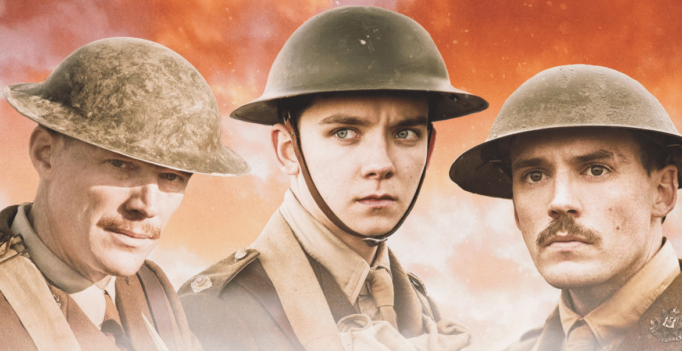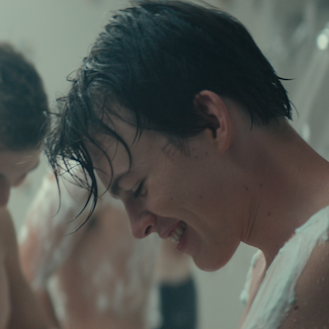By: Trevor Chartrand
Between the imminent threat of attack, the dank living conditions and the terrible rations, there’s no nightmare worse than enduring trench warfare. Filmmaker Saul Dibb dares to depict these WWI conditions in Journey’s End, a gritty war drama with intense realism. To be clear, this isn’t a film that celebrates war heroes or glorifies the battlefield. Instead, the film follows a group of soldiers who are faced with the inevitable promise of death, and examines the calm before the impending storm.
Based on the play written by R. C. Sherriff in 1928, Journey’s End benefits significantly from its theatrical roots. Set almost entirely in one location, a trench on the front lines, the British soldiers of Third Company are essentially helpless, awaiting their demise for the duration of the film. They’re trapped in the trenches, knowing the Germans are preparing for a massive offensive just a few feet away – they know it’s coming, but they don’t know when. The inevitable sense of doom reigns over them at every moment.
The film primarily explores the relationship between the wide-eyed, eager young soldier Raleigh (Asa Butterfield) and his old friend, Stanhope (Sam Claflin), who has been serving in the war for over a year. In the time they’ve been apart, war has changed Stanhope, and the cynical captain fears that his girlfriend – Raleigh’s sister – will discover his mean, drunk demeanor through his latest recruit’s letters home. Stanhope is cold towards Raleigh, who quickly realizes his ‘friendly visit’ could cost him his life. Instead of the excitement and heroism Raleigh craves, he finds himself knee deep in mud and excrement – in more ways than one.
The strength of Journey’s End boils down to the situation and the relationships forged in the face of death. Late in the film, there’s a particularly poignant scene between Raleigh and Osbourne (Paul Bettany), a higher ranking officer who becomes the father figure Raleigh needed Stanhope to be. Before a raid into enemy territory, the two share a quiet drink and convince themselves they are about to take a sight-seeing hike through the woods. A scene like this could easily have been over-the-top with manipulative orchestral score or repressed tears in the actors’ eyes, but impactful moments in Journey’s End are always played straight, as they should be. As a result, the performances are masterfully subdued and repressed.
Additionally, the superb set design is a character in itself in this film. The actor’s performances were likely enhanced considerably due to the look of the location alone. With the attention to detail in the production design, it’s not hard to imagine living the conditions of WWI trenches. The trench set, where the majority of the film takes place, feels so visceral and so tangible; it’s shot so you can taste the mud the soldiers have to wade through. The grimy trench floor, the crumbling wooden walls, and the dimly lit bunkers instantly generate sympathy for these characters and what they’re dealing with. It’s like a smaller scale version of the experience of watching last year’s Dunkirk – you’ll actually feel like you’re on the battlefield with these soldiers in Journey’s End.
The few action sequences that do appear in the film are handled tastefully, rife with tragedy and affliction. It’s not the fighting that makes Journey’s End an interesting film though – it’s the anticipation of fighting, the moments between.
At the end of the day, Journey’s End is a character study just as much as it a war film. It’s an incredibly passionate, tragic exploration of the human condition during a devastating time in human history.
Director Saul Dibb delivers a reigned-in, emotionally charged film in a visually stunning world of rot and decay.
**********
Do You Tweet? Follow These Tweeple:
Trevor Chartrand: @OhHaiTrebor





Be the first to comment